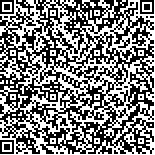下载中心
优秀审稿专家
优秀论文
相关链接
摘要

2. 中国科学院大学, 北京 100049
极轨海洋卫星的时间分辨率低,不能及时感知快速变化的海洋现象及海洋突发事件,因此,发展静止轨道海洋成像辐射计势在必行。静止轨道卫星可以长时间观测指定海域,但是视场小,需要通过二维指向镜等方式扩大卫星的观测区域。本文意在通过提出漏扫判断方法,给出合理的扫描方式,保证高轨面阵扫描无地理信息遗漏。首先,本文在分析二维指向镜成像原理的基础上,给出了指向镜子图像成像特性以及不同方向、大小的电机转角所引入的像面旋转。其次,画出了子图像的边界包络图,直观地给出了扫描角度变化与图像覆盖程度的关系。最后,提出了两种无缝拼接的判断方法:栅格法和几何相交法,栅格法能够判断出图像覆盖次数,几何法速度快、准确度高。实验结果表明应用本文的两种方法得到了不同扫描角度间隔下地球边缘有无漏扫的情况,找到基于本文光学系统、可覆盖全球且无缝拼接图像的最大俯仰、方位转角间隔,为电机转角步距的设置提供理论依据,保证不漏扫的同时提高载荷的时间分辨率。
Geostationary satellites can perform high-frequency observation in the same area of the Earth. To extend the area of observation, we use a two-dimensional pointing mirror combined with a frame sensor. A two-dimensional pointing mirror can acquire image information in a short time, and its small volume and low weight render it an appropriate device loaded on the satellite. However, imaging theory of the pointing mirror indicates that image rotation and non-linear error reduce the geometric accuracy of image and may cause missing scans.
To address the problem, we first analyze the imaging characteristics of each slot and calculate the rotation angle. We numerically analyze different types of angular error introduced from pitch and azimuth rotation. Then, we propose a mechanism by which the pointing angle affects image coverage. We provide a flow chart of cover rate analysis and figures showing the cover area of different pointing angles. Boundary diagrams of slots are drawn to display the relationship between angular variations and cover rate. After numerical analysis, we find a better way to observe the Northern Hemisphere.
Then, we develop two judging methods of seamless stitching: grid method and geometric intersection method. The grid method is used to grid the pointing plane and label cover time on each grid point, whereas the geometric intersection method is used to determine whether the image information is missing on the basis of intersecting relations of the slot envelope. Different situations of geometric intersection are listed. The two methods are also compared. The grid method can determine the coverage time, and the geometric method has great advantages of speed and accuracy.
Finally, the two methods have been used to obtain the cover situation of the edge of the Earth at different scanning angles, to find the maximum pitch and azimuth angle interval of the proposed optical system, which can cover the global area and seamless splicing images.
When the point mirror is rotating in azimuth, image rotation is more obvious with an increase in motor angle. When the mirror is rotating in pitch, the rotation angle increases with a decrease in pitch angle. Thus, the relative location of the follow-up optical elements should be considered to obtain a low rotation angle of key observation area.
This process provides the theoretical basis for setting the turning step of the motor and ensures that the time resolution of the load is increased without geometric information leakage.

